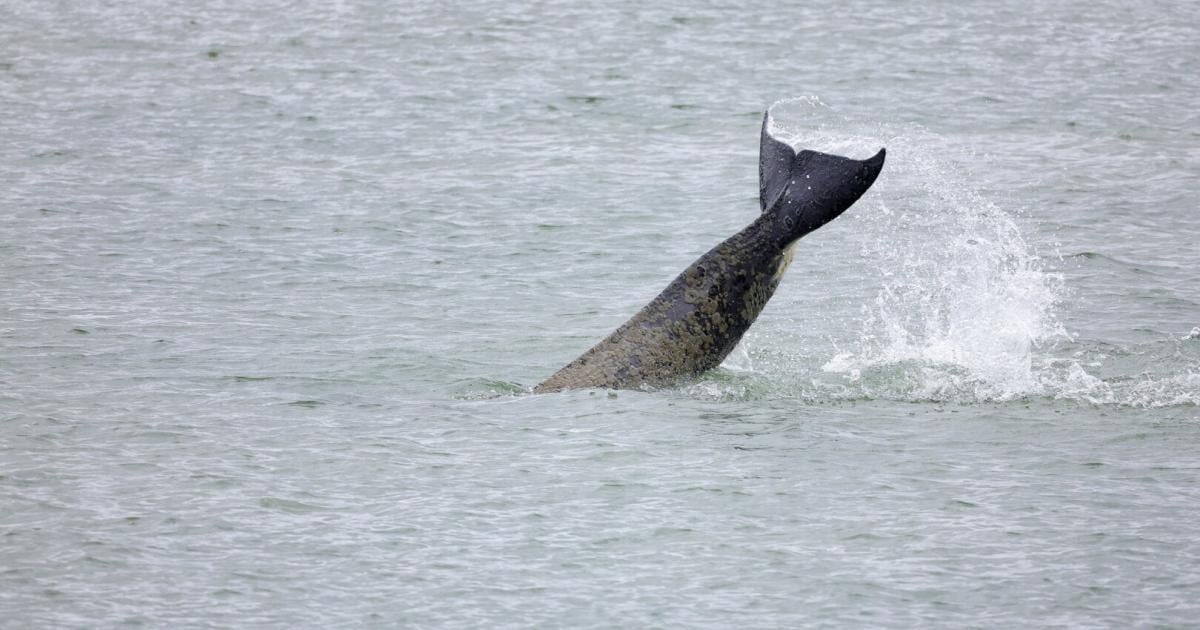Is the next Oder disaster just weeks away? The results obtained from the water experts and the initial assessment of the damage are worrying. In addition, relations with Poland are still troubled.
Berlin (dpa) – Almost a year after the ecological disaster in the Oder last summer, more than half of the fish in the river have been lost, according to analyses. Especially in the middle of the Oder, fish stocks decreased by 53 to 67 percent, as shown by scientific studies on the state of the German-Polish border river this year. Federal Environment Minister Steffi Lemke (Green Party) described the situation as “disappointing”.
She said Monday at the Leibniz Institute for Freshwater Ecology and Inland Fisheries (IGB) in Berlin that time was short to reduce the Oder’s high salt content, which probably came from Polish mining. But so far, “no paradigm shift” can be seen here in Poland. “This is why the relationship is still strained,” Lemke said.
On Monday the same at the IGB research institute reported the balance of damage so far after the ecological disaster and the restoration of fish stocks. For months, there has been great concern in politics and science that the massive fish kill of last August will be repeated this summer. IGB scientists are researching the state of the Oder and the brackish water algae Prymnesium parvum with funding close to 5 million euros. “This tiny alga poses many mysteries for us,” said scientist Jan Köhler.
High salinity, low water, high temperatures and the poison of the algae species Prymnesium parvum, also known as golden algae, are the causes of mass fish deaths. According to the latest information from IGB scientist Christian Walter, about 1,000 tons of fish died in the river. The numbers were said to be higher than previously assumed, because not many fish could be collected from the bank because they had sunk to the bottom of the river.
Signs of initial healing
“There is a certain concern that the situation on the Oder is similar to that of last summer,” said ITUC deputy director Thomas Miner. From March to June this year, the concentration of algae in the Oder also rose sharply, said project manager Martin Bosch. The IGB wants to create some kind of early warning system for the development of algae species, which can produce a deadly toxin but have not yet occurred in fresh water. According to the IGB, the concentration is measured at measuring stations on the German side and analyzed using a special tester.
Despite significant losses in the Oder’s fish stocks – particularly in the species bats, gudgeon and bleak – there are signs of an initial recovery, said fish ecologist and IGB scientist Wolter. All types are selected. “It was a good childbearing year.” She said any further uploading of Oder would have dire consequences for a very long period of time. The research institute IGB as well as Lemke have long called for a halt to the development of the Oder, especially on the Polish side.
© dpa-infocom, dpa: 230626-99-193112/3

“Alcohol buff. Troublemaker. Introvert. Student. Social media lover. Web ninja. Bacon fan. Reader.”







More Stories
Orca “attacks” science puzzle
This diet strengthens the psyche and emotional well-being – a healing practice
An exoplanet is like a cotton ball